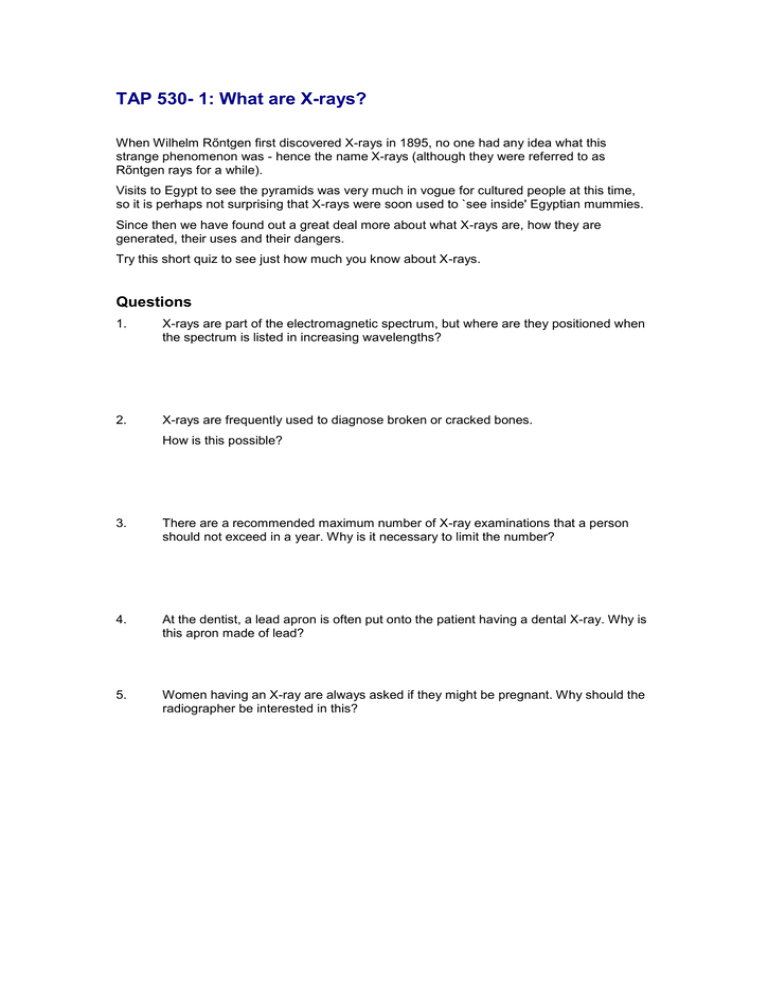Episode 530-1: What are X-rays? (Word, 28 KB)
advertisement

TAP 530- 1: What are X-rays? When Wilhelm Rőntgen first discovered X-rays in 1895, no one had any idea what this strange phenomenon was - hence the name X-rays (although they were referred to as Rőntgen rays for a while). Visits to Egypt to see the pyramids was very much in vogue for cultured people at this time, so it is perhaps not surprising that X-rays were soon used to `see inside' Egyptian mummies. Since then we have found out a great deal more about what X-rays are, how they are generated, their uses and their dangers. Try this short quiz to see just how much you know about X-rays. Questions 1. X-rays are part of the electromagnetic spectrum, but where are they positioned when the spectrum is listed in increasing wavelengths? 2. X-rays are frequently used to diagnose broken or cracked bones. How is this possible? 3. There are a recommended maximum number of X-ray examinations that a person should not exceed in a year. Why is it necessary to limit the number? 4. At the dentist, a lead apron is often put onto the patient having a dental X-ray. Why is this apron made of lead? 5. Women having an X-ray are always asked if they might be pregnant. Why should the radiographer be interested in this? Practical advice `What are X-rays?' is mainly a recap of work done at pre-16 level to remind students of the nature of X-rays, their uses and dangers. Answers 1. X-rays are listed after gamma rays and before ultraviolet in the electromagnetic spectrum (in increasing wavelength). (Their wavelengths are typically 10-10 m, compared with a bit less than 10-6 m for visible light.) 2. Bones show up on an X-ray photograph because the X-radiation passes through soft tissue but is stopped (absorbed) by the bones (bones are much denser). The photographic film is blackened by the X-rays going through the soft tissue and through the crack in the bone, while the bones show up as white where little Xradiation has gone through. So a better name for the ‘photograph’ is a shadowgraph 3. When the X-rays pass through the body they affect the body tissues. In fact the X-rays have so much energy that they can kill cells on the way through or at least damage them. The more X-rays you have over a short period of time, the more damage is done to your body tissue from which it does not have enough time to recover. 4. The lead apron is to prevent X-rays entering the patient's body. The high density of lead and its high Z number prevents X-rays passing through it. (There are more dense metals - for example gold, but that would be a little expensive in an apron!) 5. The danger of administering an X-ray to a pregnant woman is that the growing embryo or foetus may be damaged by the X-rays passing through it. This is particularly important because the rate of cell division in a developing baby is extremely high, and if cells are damaged or mutated by X-rays then this might cause the baby to be deformed. External reference This activity is taken from Salters Horners Advanced Physics, section DUTP, additional activity 3





